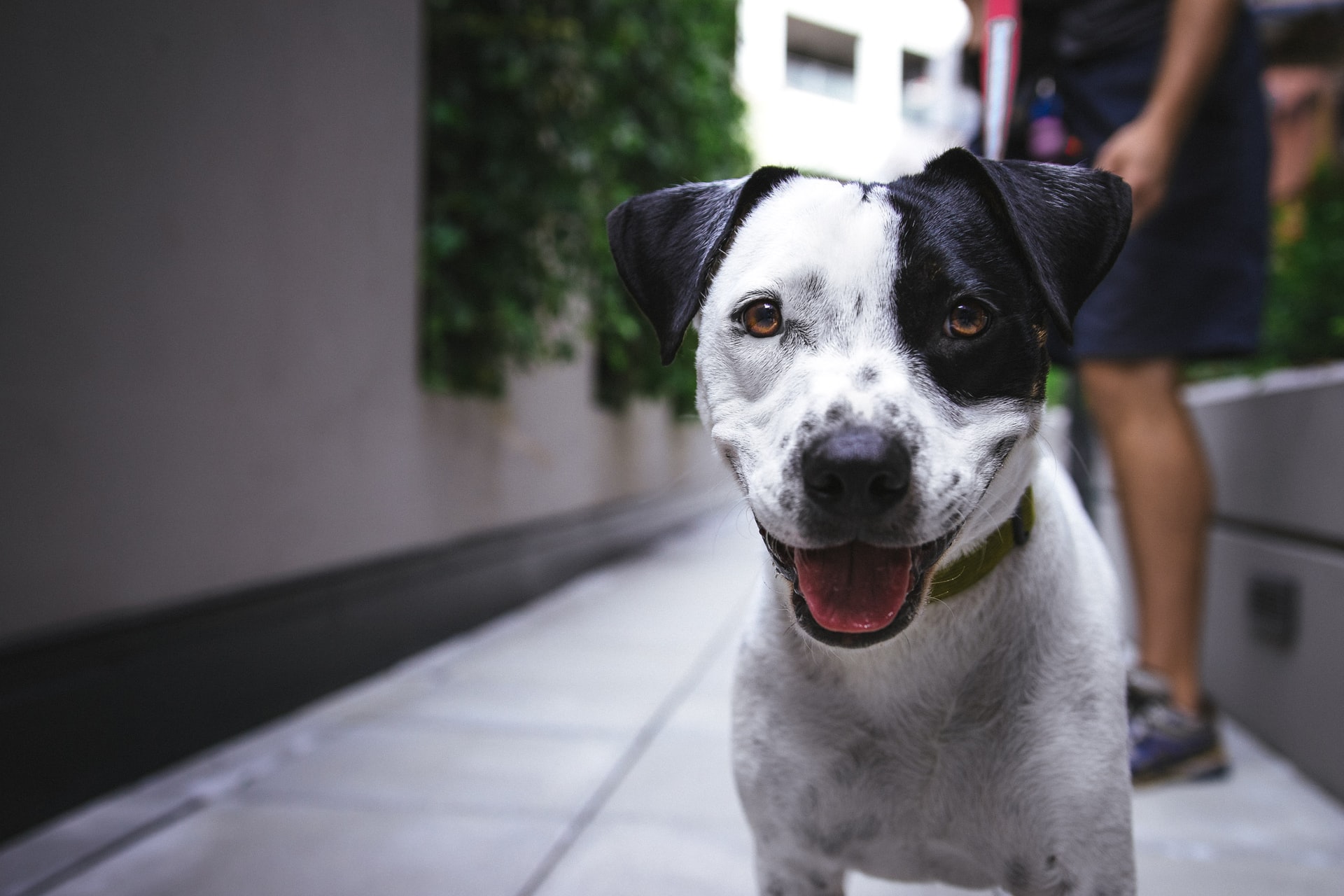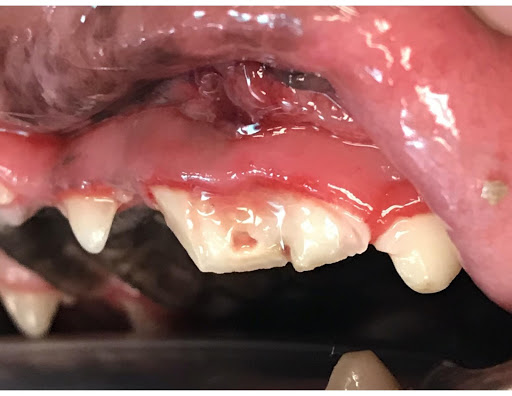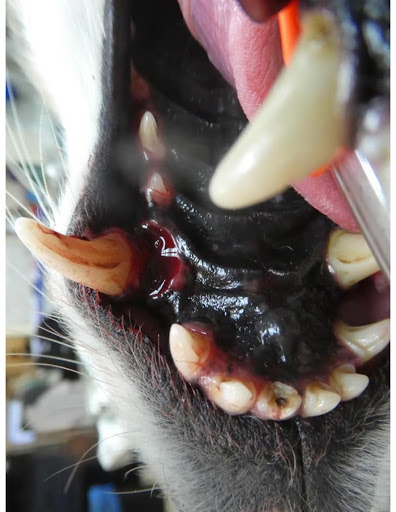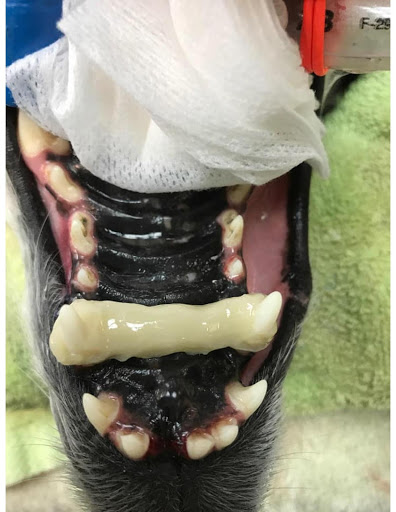
02 Nov Dental Trauma and Tooth Luxation in Dogs
Dental trauma involves injury to teeth and the supportive structures that surround them. In canines, dental trauma often causes tooth fracture and tooth luxation. Both of these injuries are painful and affect the overall health of the pet. Causes of dental trauma include chewing on inappropriate objects, dog fights, and vehicular or blunt trauma, among others.
Tooth Fractures from Dental Trauma in Dogs
Tooth fractures are not uncommon injuries in our companion pets. In one study evaluating 621 dogs and cats, 26.2% of patients were diagnosed with dental trauma. Almost half of the tooth fractures evaluated involved pulp exposure with the canine (fang) teeth most commonly affected.
Fractured teeth are painful and can lead to infection, if not addressed. If the tooth fracture exposes the pulp, then root canal therapy or extraction is warranted. If the tooth fracture does not involve the pulp, then a procedure called odontoplasty with a bonded sealant is an option in many cases. This involves smoothing the fracture site, followed by applying a bonding agent and unfilled resin to protect the underlying tooth structure.

Tooth Fracture with Pulp Exposure
Tooth Luxation from Dental Trauma in Dogs
Tooth luxation in dogs is the partial separation of the tooth from its socket (alveolus). Tooth luxation most commonly occurs when a pet bites on a moving object such as a tire, another animal, or if they suffer blunt trauma to the face.
The most common teeth luxated are the canine teeth. Luxated teeth are treated in one of the following two ways: 1) Return of the tooth to its normal position and placement of an intraoral splint with subsequent root canal therapy or 2) Extraction.
Ideally, the tooth is repositioned within the socket followed by placement of a splint to allow healing of the supporting bone and periodontal tissue. At the subsequent checkup, the splint will be removed. Root canal therapy is completed at this time since the blood supply to the tooth was severed at the time of luxation. This causes the pulp of the tooth to be necrotic (dead). Alternatively, the luxated tooth can be extracted. Root canal therapy is ideally the best option since the pet can avoid a surgical extraction.


Luxated Canine Tooth Luxated Canine Tooth Replaced with Splint
Avoiding Dental Trauma & Dog Tooth Luxation
In many cases, dental trauma occurrence can be minimized by choosing chew toys that are tooth-friendly. Avoiding hard objects such as antlers, bully sticks, cow hooves, and similar items is strongly encouraged. If you believe your pet may have suffered dental trauma, our Board-Certified Veterinary Dentists at Animal Dental Care and Oral Surgery are here to help. Please contact us to schedule an appointment in Colorado Springs, Castle Rock or Loveland, Colorado.
1. Soukup JW, Hetzel S, Paul A. Classification and Epidemiology of Traumatic Dentoalveolar Injuries in Dogs and Cats: 959 Injuries in 660 Patient Visits (2004-2012). J Vet Dent. 2015 Spring;32(1):6-14
Photo by Justin Veenema on Unsplash (11/2/2020)

